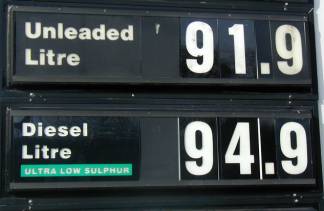One of the most obvious disadvantages of having two systems of measurement is the problem of calculating fuel consumption. In most countries it is normal for motorists to check their fuel consumption by comparing the volume of fuel purchased over a period of time with the distance travelled as measured by an odometer. However, in the UK most motorists have great difficulty in doing such calculations and probably do not attempt them. This is because fuel is sold in litres (metric) whereas odometers show miles (imperial).
The lack of joined-up measurement unit policy meant that Britain switched to fuel consumption using litres in the 1980s without planning to change distance measurements to metric.
Official figures are of course metric. According to the Passenger Car (Fuel Consumption and CO2 Emissions Information) (Amendment) Regulations 2004 fuel consumption should be measured in either litres per 100 km (L/100 km) or kilometres per litre (km/L). However the news media and the general public most frequently refer to miles per gallon.

Measuring fuel consumption in miles per gallon is of no value when fuel is sold in litres.
Carbon dioxide emissions
Understanding car emissions is increasingly important both for reducing environmental pollution and for tax purposes. Official emissions of carbon dioxide (CO2) are in grams per kilometre (g/km). However, the full impact of these figures is not apparent to motorists unless they measure distances in kilometres.
